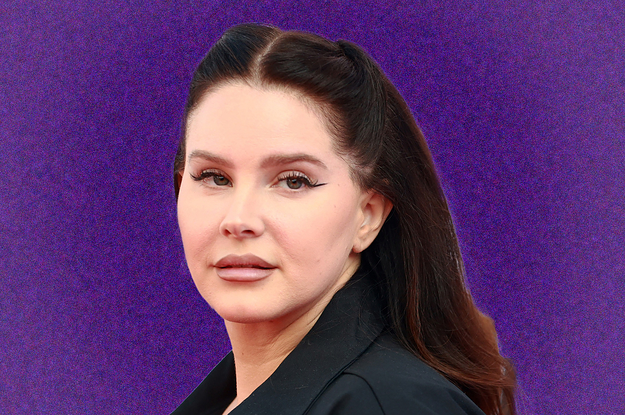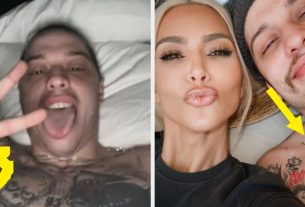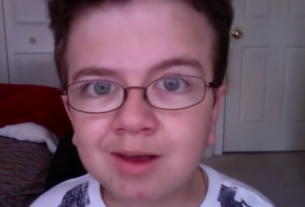“Videos like this are why women will never feel peace,” TikToker Michaela Rose said Doyle in a response to the trend. “When it comes to pregnancy, there are already so many mixed emotions, especially for our generation. This is one of many trends where people can deliver commentary on women’s bodies in a very backhanded way.”
Similarly, commenters on the top videos say they are erasing “body positivity” trends.
“For a second, we had this great wave of body positivity compared to 2014. I thought we were heading in the right step, but the things I see on my For You page promote eating disorders,” Patrick said.
“It really just brings you back to that 2012 Tumblr experience by commenting on people’s bodies in a cute and trendy way,” Doyle added.
Weight-normative content on TikTok is more common than you think
A 2022 study of TikTok content suggests the app’s sounds and hashtags may contribute to body dissatisfaction and disordered eating by creating a space for inaccurate and weight-normative content. Despite TikTok’s censorship policies on content that promotes diet culture and eating disorders, nearly 44% of videos that are tagged as #weight or #food include weight-loss and body transformation content. Additionally, less than 3% of videos in the body-related hashtags contained weight-inclusive content, the University of Vermont researchers reported in the journal PLOS One.
In the study, the researchers looked at 1000 videos from 10 nutrition, food, and weight-related hashtags that had over 1 billion views, and then did a closer analysis of the top 100 videos from each hashtag.
Common trends include “What I Eat in a Day” videos, which show weight transformations while including weight-loss references. Intermittent fasting, high-protein, low-calorie, and liquid diets were also included under the hashtag “nutrition.”
But who’s making this content? According to the analysis, it was most often white female adolescents and young adults (64.6% of creators were female-presenting and 30.6% were male presenting).
“When we already have internal bias, content is just reinforcing those biases that we have, and it’s giving young people skewed views of what beauty is, and how not only what we should be thinking about our bodies, but of people,” Langer said. In videos under body-related hashtags containing nutritional advice, only 1.4% of content was created by registered dietitians.
How do young people internalize body-image content?
Considering TikTok’s largest user demographic ranges from ages 10 to 19, people who create and engage in weight-related content may already be at risk of having a negative body image or disordered eating behaviors, according to the 2022 study in PLOS One.
“There’s a difference between ‘I have to take care of myself’ versus ‘I have to do everything possible, which might include starving myself, not eating, limiting carbs, and over-exercising,’” said Rania Batayneh, a nutritionist and wellness coach. “When they see people they admire changing, it might even trigger them to increase their own worries and fears about aging and what they might look like.”
Adolescent girls who witness negative body comparisons on social media may have an increase in body dissatisfaction and strive to look a certain way, according to a 2022 study in the journal BMC Women’s Health in which researchers did in-depth interviews with 24 girls. Participants said they felt pressure to meet unrealistic expectations when viewing fitness accounts on social media.
What’s next for weight-related and food content on TikTok?
In 2020, TikTok’s safety policy manager released a statement declaring a change in the company’s ad policies to promote a more positive environment when it comes to body size. The app banned ads for fasting apps, weight-loss supplements, and information that can promote harmful behavior. However, this still allows “weight management” products to reach users over 18.
TikTok has also partnered with the National Eating Disorder Association, adding a feature in 2021 to the bottom of videos that may contain unsafe content. As a result, a trigger warning may appear on some videos. (BuzzFeed News reached out to TikTok about the song, and a spokesperson referred us to its community guidelines. The app appeared to have removed some of the videos as of Monday.)
Additional in-app controls include reporting content, selecting “not interested” when viewing content to hide future content from the creator and sound, adding comment filters that automatically hide offensive comments, and blocking specific accounts and sounds.
Despite the trend towards more body acceptance on social media, diet culture continues to harm viewers who may internalize messages about aging and body image, Batayneh said.
“The simple notion of aging is women fearful of gaining weight, getting wrinkles, or looking different — this idea of preserving your youth is so powerful in our society,” she said. “If you admire someone for their appearance, which is how we look at Hollywood and celebrities, and if that person changes and they don’t fit our memory, you might need to start thinking of yourself and how your body changes.”



